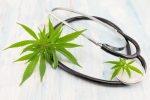CBD Prevents Seizures in Dravet Children, but Linked to Side Effects
Analysis: Clinicians should consider adverse effects before treatment
Written by |

Although the use of cannabidiol (CBD) is associated with reduced seizure frequency in children with Dravet syndrome, various cannabinoid-based products, including CBD, may be linked to adverse side effects in pediatric patients, a meta-analysis showed.
Specifically, treatment with CBD may lead to an increased tendency for children to experience gastrointestinal problems, a reduced appetite, and mental health concerns, the data showed. Among the “mental events” cited were fatigue, irritability, aggression, and mood changes.
“This meta-analysis … showed that medical cannabinoids are associated with safety aspects, including SAE [serious adverse events] incidence, decrease in appetite and adverse mental events in the pediatric population,” the researchers wrote.
“These effects should be taken into consideration before and during treatment,” the team noted, adding that more studies will be needed to confirm these findings.
The study, “Efficacy and safety of medical cannabinoids in children: a systematic review and meta-analysis,” was published in Scientific Reports.
Cannabinoids are a class of compounds derived from the cannabis plant, and include delta (9)-tetrahydrocannabinol (THC) — the predominant mind-altering component of cannabis — and CBD, the main non-psychoactive component.
Plant-based cannabinoids and other lab-made versions have gained substantial attention for their potential therapeutic properties, including an ability to reduce seizure frequency in patients with epilepsy.
Epidiolex, an oral CBD solution, is an approved therapy in the U.S., the EU, and other countries for preventing seizures in patients with Dravet and Lennox-Gastaut syndromes. Other cannabinoid products, containing CBD and/or THC at various ratios, have been evaluated as treatments for a range of conditions, including some epilepsy types.
Investigating CBD use in children
While such products are increasingly being used in children, there are conflicting reports of their risk-to-benefit ratio in pediatric populations. As its name suggests, this ratio is an analysis that seeks to quantify the risk versus the benefits of a given therapy.
To learn more, a team of researchers, led by scientists in Israel, conducted a review and meta-analysis of eight studies that evaluated cannabinoid products in pediatric patients. The aim was to gain a better sense of the efficacy and safety of such products.
Overall, 642 patients were included in the studies, and the cannabinoids were tested for indications including Dravet syndrome, severe behavior problems, chemotherapy-induced nausea, spasticity, and autism spectrum disorder.
Of these eight studies, five evaluated a cannabinoid’s effect on seizures. Three tested oral CBD (Epidiolex) in Dravet patients, while two used a CBD-THC mixture. Those two trials were not conducted in Dravet patients; they were primarily aimed at evaluating muscle spasticity and autism, but each also evaluated seizures.
A pooled analysis showed that CBD likely leads to a 50% reduction in seizure frequency, compared with before treatment, among children who used it. While pure CBD was deemed likely to lower seizure rates compared with a placebo, mixed products containing THC were not associated with a similar decrease.
CBD also was linked to improvements in the Caregiver Global Impression of Change (CGIC) scale relative to a placebo, reflecting that caregivers felt the child improved under treatment.
The researchers cautioned that while CBD is expected to lead to improvements in many Dravet patients, “it may substantially exacerbate the epilepsy condition” in others. Future studies in other forms of pediatric epilepsy also are warranted, the researchers added.
Across the studies, including those for Dravet as well as other indications, cannabinoid use was linked to some adverse events, although not all findings were statistically significant.
Cannabinoid exposure of any type tended to be associated with an increase risk of serious adverse events, but the finding was not statistically significant. Similarly, CBD was linked to decreased appetite, but again, the finding failed to reach significance.
In subgroup analyses, CBD, but not mixed products, were linked to the presence of gastrointestinal problems, like diarrhea, nausea, or vomiting.
In most studies, the rate of adverse mental events was higher in the cannabinoid group than a comparator group, regardless of the type of cannabinoid used. In four of eight studies, that difference was found to be statistically significant.
Overall, while CBD demonstrates anti-seizure benefits in children with Dravet, “the potential harmful effects of medical cannabinoids suggest that healthcare providers should be aware of possible adverse mental events,” and that healthcare providers “should follow appetite and physical development in children exposed to CBD.”
The team noted, however, that the study is limited by a small sample size and that more work is needed to strengthen the findings.
It also will be important in future studies to assess the longer-term effects of these medications in pediatric populations, they added.
“The permanent consequences of cannabinoids exposure are still unclear, as timing and duration of exposure might play a crucial role in its long-term trajectory,” the team wrote, adding that this “should be examined in studies conducted for the long term.”






